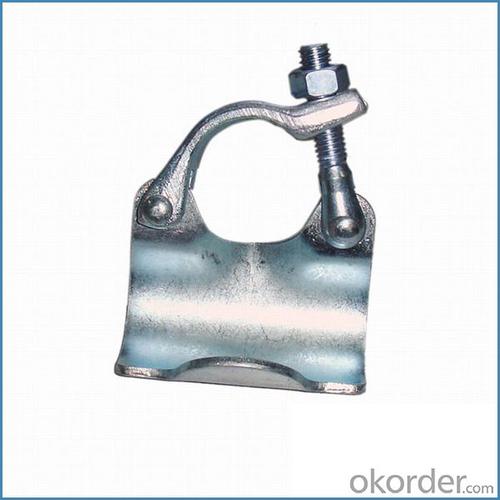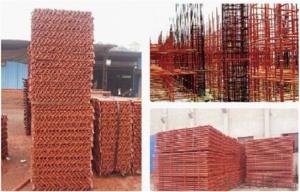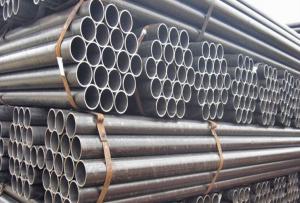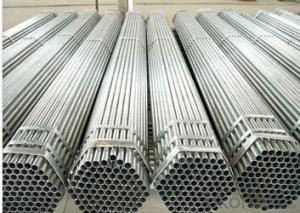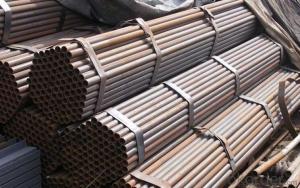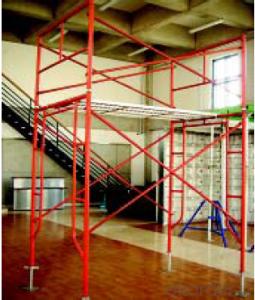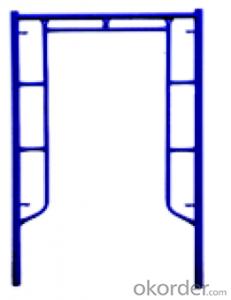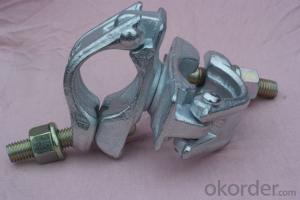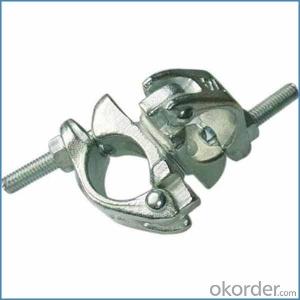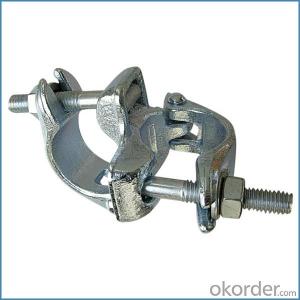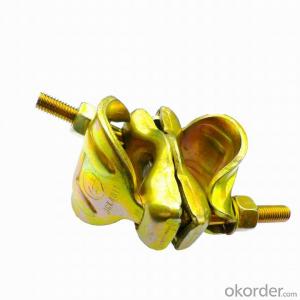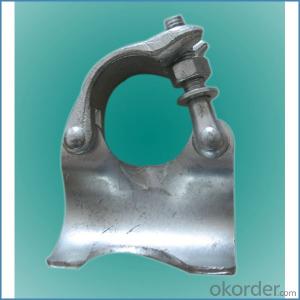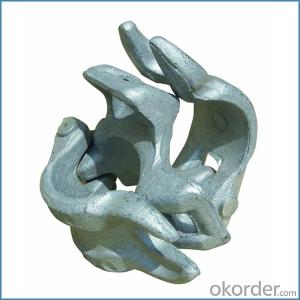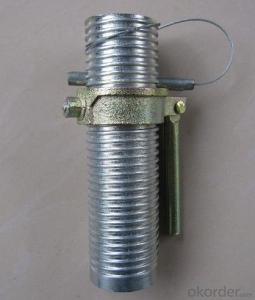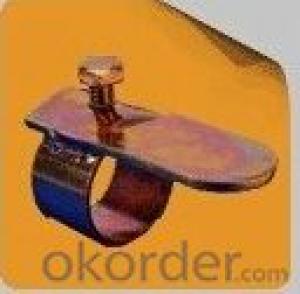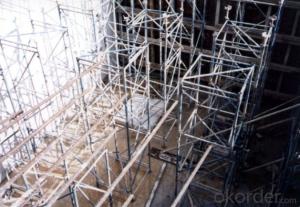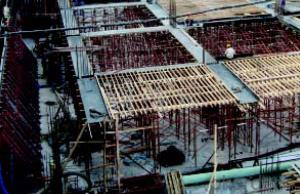Scaffolding Board Clamp british German Forged Type
- Loading Port:
- Tianjin
- Payment Terms:
- TT OR LC
- Min Order Qty:
- 1000 kg
- Supply Capability:
- 100000 kg/month
OKorder Service Pledge
OKorder Financial Service
You Might Also Like
Scaffolding Board Clamp british German Forged Type
Description
1.The scaffolding coupler is always used to connect the steel pipe as scaffolding system.
2.The often used coupler is swivel coupler and righ angle coupler .
3.We can provide types of scaffolding coupler according to your requirement.
4.Couoler can fix the 48.3mm scaffolding steel pipe tightly and make the whole scaffolding system more steadily.
Feature
(1)Excellent Anti-Breaking—Cold Pressed Steel
(2)Outstanding Resistance Deformation
(3)Strong Anti-Dropping Ability
Photo
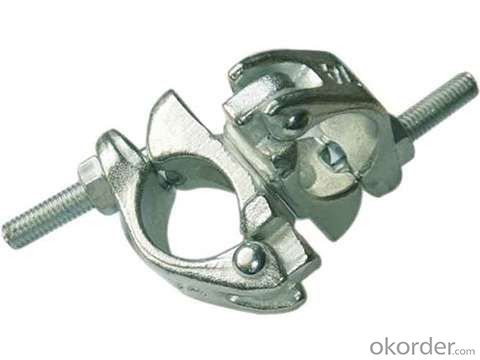
Parameter
| Material | Q235,345steel |
| Size | 48.3mm*48.3mm |
| Surface finish | Galvanized |
| Weight | 1.1kg around |
| Standard | BS1139,EN74 |
| Package | 25pcs/bag,steel pallet |
| Manufacture | As per customer requirement |
| Market | Africa, South America, the Middle East and Asia |
FAQ
Q: Are you a factory or trading company?
We are a state-owned corporation in China,dealing with various kinds of building materials.We have our holding subsidiaries.
Q: Where is your factory located? How can I visit there?
Our factory is located all around China.
Q: Can I get some samples?
Sample is free, customer only pay freight for the first time.
Q: Delivery?
10-30days. (5-15 containers)
Any question,feel free to contact us.
- Q: why scaffolds need to be inspected within the preeceding 7 days and after adverse weather condition?
- rust could weaken the metal
- Q: What are the common accessories or attachments used with steel tube couplers?
- Common accessories or attachments used with steel tube couplers include gaskets, bolts, nuts, washers, and sealants. These components are essential for ensuring a secure and leak-proof connection between the steel tubes, providing stability and strength to the overall structure. Additionally, some applications may require specialized accessories such as clamps, brackets, or reinforcement plates to accommodate specific design requirements or load capacities.
- Q: How do steel tube couplers work in scaffolding systems?
- Steel tube couplers are an integral part of scaffolding systems, as they allow for the secure connection of steel tubes or pipes to create a stable and sturdy structure. These couplers are designed to provide a strong and reliable connection between tubes, ensuring the safety of workers who rely on scaffolding for various construction or maintenance activities. The working principle of steel tube couplers is relatively simple yet effective. The couplers consist of two main components: a main body and bolts. The main body is typically made of high-quality steel and is designed to fit around the ends of two tubes, creating a secure joint. The bolts are used to fasten the main body tightly around the tubes, ensuring a tight and secure connection. To use steel tube couplers, the first step is to ensure that the ends of the tubes are clean and free from any debris or rust. This is essential to promote a strong connection and prevent any weakening of the structure due to corrosion. Once the tubes are prepared, the main body of the coupler is placed around the ends of the tubes, ensuring a snug fit. Next, the bolts are inserted through the holes in the main body and tightened using a wrench or spanner. This tightening process ensures that the coupler grips tightly onto the tubes, creating a rigid and secure joint. It is important to tighten the bolts sufficiently to prevent any movement or slippage, but not overtighten them, as this can cause damage to the tubes or coupler. Once the coupler is securely fastened, it provides a connection that can withstand significant loads and forces. This allows for the construction of scaffolding structures that can support workers, tools, and materials at various heights. The couplers also enable flexibility in the design and layout of the scaffolding system, as they can be easily adjusted or rearranged to accommodate different requirements or configurations. Overall, steel tube couplers play a crucial role in scaffolding systems by providing a robust and reliable connection between tubes. Their simple yet effective design ensures the stability and safety of scaffolding structures, allowing workers to carry out their tasks with confidence.
- Q: How do you store steel tube couplers when not in use?
- When not in use, it is important to store steel tube couplers properly to ensure their longevity and prevent any damage or deterioration. Here are a few recommended methods for storing steel tube couplers: 1. Clean and dry: Before storage, ensure that the couplers are thoroughly cleaned and free from any dirt, debris, or moisture. Use a soft cloth or brush to remove any residue, and allow them to air dry completely. 2. Organize and label: It is advisable to organize the couplers in a systematic manner to facilitate easy access and prevent any mix-up or confusion. You can sort them based on size, type, or any other relevant criteria. Additionally, labeling each container or shelf will help identify the couplers quickly. 3. Use storage racks or containers: Invest in a suitable storage rack or container that can accommodate the size and quantity of your steel tube couplers. These racks or containers should be sturdy, well-ventilated, and preferably rust-resistant to ensure the couplers remain in good condition. 4. Avoid direct contact with the ground: When storing the couplers, it is important to keep them elevated and away from direct contact with the ground. This helps prevent moisture absorption, rusting, or any damage caused by exposure to dirt or other contaminants. 5. Protect from extreme temperatures: Steel tube couplers should be stored in a controlled environment to avoid exposure to extreme temperatures. High temperatures can cause distortion or weakening of the couplers, while freezing temperatures can lead to brittleness or cracking. Therefore, it is best to store them in a climate-controlled area. 6. Consider using protective coatings or lubricants: Applying a thin layer of protective coating or lubricant to the couplers can provide an additional layer of defense against rust or corrosion during storage. Consult with a professional or manufacturer to determine the most suitable coating or lubricant for your specific type of couplers. By following these storage guidelines, you can ensure that your steel tube couplers remain in excellent condition and are ready for use whenever required.
- Q: Are steel tube couplers easy to install and remove?
- Steel tube couplers are known for their ease of installation and removal. Their purpose is to connect multiple steel tubes, creating a reliable and sturdy joint. The installation process is typically straightforward, requiring only a few tools and equipment. These couplers are usually threaded or designed to slip on, allowing for a quick and effortless attachment to the steel tubes. Likewise, removing them is also uncomplicated, often involving the use of a wrench or other tools to loosen and detach the coupler from the tubes. Overall, steel tube couplers provide a convenient and user-friendly experience for both installation and removal.
- Q: What are the loads that can be sustained by the construction of fasteners?
- Look at the cold water tower of the chemical plant and inspire you.
- Q: Can steel tube couplers be used in corrosive environments?
- In corrosive environments, steel tube couplers can be utilized, but it relies on the steel type and the level of corrosion resistance needed. There are diverse grades of stainless steel couplers specifically crafted to withstand corrosion in harsh settings, such as the marine or chemical industries. These couplers are composed of stainless steel alloys containing higher levels of chromium, which forms a protective layer against corrosion. Nevertheless, it is imperative to take into account the precise corrosive agents within the environment and seek advice from a corrosion engineer or specialist to ascertain the most appropriate steel grade and coating for the couplers. Moreover, regular inspection and maintenance are indispensable to guarantee the durability and effectiveness of the couplers in corrosive environments.
- Q: Can steel tube couplers be used for both indoor and outdoor scaffolding projects?
- Steel tube couplers are suitable for both indoor and outdoor scaffolding projects. Their purpose is to connect and secure scaffolding tubes, giving them stability and support. These couplers are made of high-quality steel, which ensures durability and resistance to different weather conditions. Regardless of whether it's an indoor or outdoor construction project, steel tube couplers can withstand the elements and create a reliable connection. However, it is crucial to properly maintain and protect the couplers from corrosion in outdoor projects. Moisture and other environmental factors can cause rusting and reduce their lifespan. In conclusion, steel tube couplers are versatile and can be used in both indoor and outdoor scaffolding projects.
- Q: Do steel tube couplers provide a secure and stable connection in scaffolding?
- Yes, steel tube couplers provide a secure and stable connection in scaffolding. They are designed to withstand heavy loads, provide excellent grip on the tubes, and ensure a reliable connection between different scaffold components. Steel tube couplers are widely used in the construction industry for their strength and durability in creating a safe and stable scaffolding structure.
- Q: Are steel tube couplers compatible with different pipe sizes?
- Yes, steel tube couplers are typically compatible with different pipe sizes. They are designed to provide a secure and reliable connection between pipes of various sizes, allowing for flexibility in construction and plumbing projects.
Send your message to us
Scaffolding Board Clamp british German Forged Type
- Loading Port:
- Tianjin
- Payment Terms:
- TT OR LC
- Min Order Qty:
- 1000 kg
- Supply Capability:
- 100000 kg/month
OKorder Service Pledge
OKorder Financial Service
Similar products
Hot products
Hot Searches
Related keywords



